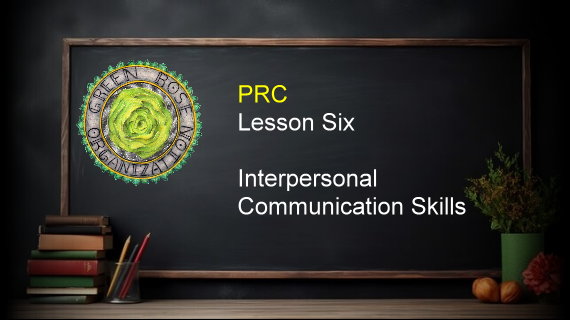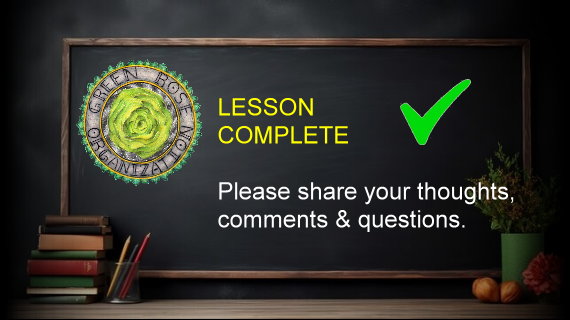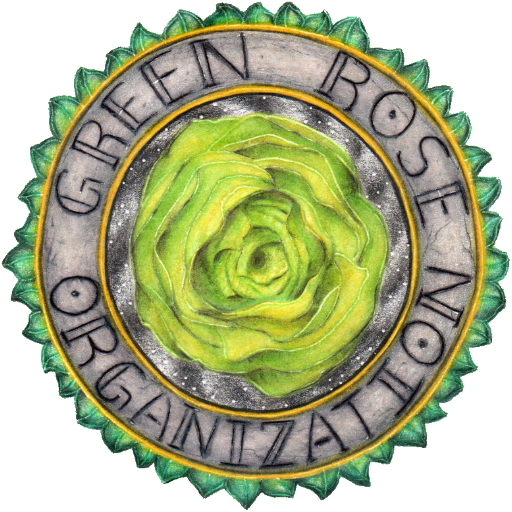
INTERPERSONAL COMMUNICATION SKILLS
10 WAYS TO BEGIN BUILDING IMPROVING YOUR INTERPERSONAL COMMUNICATION SKILLS
Improving interpersonal communication skills involves a mix of self-awareness, active practice, and cultivating empathy. Here are some effective techniques to help you hone these skills: 1. Active Listening—Pay full attention to the speaker, avoiding distractions. Show you’re engaged through affirmations like nodding or brief verbal cues (e.g., “I see,” “That makes sense”). Reflect or paraphrase what you’ve heard to confirm understanding: “So you’re saying…” 2. Cultivate Empathy—Try to genuinely understand the other person’s feelings and perspectives. Ask open-ended questions like, “How did you feel about that?” to encourage sharing. 3. Nonverbal Communication—Be mindful of your body language: Maintain eye contact, sit or stand open and approachable. Observe and interpret others’ nonverbal cues to better understand their feelings. 4. Clarity and Conciseness—Communicate your thoughts in a straightforward yet thoughtful manner. Avoid overloading conversations with unnecessary details or jargon. 5. Building Rapport—Find common interests to strengthen your connection. Use appropriate humor or positivity to create a comfortable environment. 6. Provide Constructive Feedback—Frame feedback as helpful rather than critical, focusing on solutions: “What if we tried it this way?” 7. Adaptability—Adjust your communication style depending on the person or situation. Be open to varying cultural norms and preferences. 8. Practice Conflict Resolution—Stay calm and solution-focused during disagreements. Use “I” statements to express feelings without assigning blame: “I feel concerned when…” 9. Develop Emotional Intelligence—Recognize your emotions and regulate them effectively. Be attuned to the emotions of others and respond sensitively. 10. Regular Practice and Feedback—Engage in conversations intentionally to apply your skills. Seek feedback from trusted individuals about your communication style.
DEFINING RAPPORT AND EXPLORING 10 WAYS TO ESTABLISH IT WITH OTHERS
Rapport is the sense of connection, trust, and mutual understanding between individuals. It’s that natural bond we feel when interactions flow smoothly and we feel comfortable and respected in someone’s presence. Building rapport is essential for fostering meaningful relationships—whether personal or professional—and it helps to create a foundation for effective communication.
Here are some practical ways to build rapport: 1. Show Genuine Interest—Ask thoughtful, open-ended questions about the other person’s interests, opinions, or experiences. For example: “What inspired you to choose this path?”. Actively listen to their responses without interrupting, showing that you value their input. 2. Find Common Ground—Identify shared interests, experiences, or values. Whether it’s a hobby, a favorite book, or a similar outlook, commonalities help create a sense of connection. Start conversations with neutral or universally relatable topics to uncover commonalities naturally. 3. Practice Mirroring—Subtly match the other person’s tone, pace of speaking, or body language to create a sense of harmony. Be careful to keep this natural and not forced—genuine alignment builds comfort. 4. Be Authentic—Share a little about yourself in return—self-disclosure, when appropriate, helps to build trust and intimacy. Avoid pretending to be someone you’re not; authenticity fosters real connections. 5. Cultivate Empathy—Try to see situations from the other person’s perspective. Use phrases like, “I can see why that would be challenging for you.” 6. Use Positive Nonverbal Communication—Smile warmly, maintain eye contact, and use open, approachable body language. Be conscious of your facial expressions and gestures to ensure they align with your words. 7. Be Consistent and Reliable—Follow through on commitments and promises to build trust over time. Consistency in your words and actions reinforces a dependable connection. 8. Create a Positive Environment—Offer encouragement, kindness, and positive feedback during interactions. Humor, when used appropriately, can help ease tension and strengthen bonds.
10 WAYS TO EFFECTIVELY RESOLVE CONFLICTS WITH OTHER PEOPLE
Resolving conflicts effectively requires empathy, clear communication, and a focus on finding solutions that benefit all parties. Here are some tried-and-true conflict resolution methods: 1. Practice Active Listening—Allow each person to share their perspective without interruptions. Reflect back what you hear to confirm understanding: “I understand that you’re feeling… because…” 2. Use “I” Statement—Express your thoughts and emotions without blaming others. For example: “I felt hurt when…” This approach reduces defensiveness and keeps the conversation constructive. 3. Focus on the Issue, Not the Person—Avoid personal attacks or assigning blame. Keep the discussion centered on the specific problem: “How can we solve this issue together?” 4. Stay Calm and Emotionally Regulated—Manage your emotions before engaging in the discussion. This prevents escalation and ensures clarity. Take a pause or a deep breath if things get heated. 5. Seek Common Goals—Identify shared interests or objectives that both parties can agree upon. For example: “We both want this project to succeed.” 6. Be Open to Compromise—Find middle ground where possible, without sacrificing your core values. Compromise demonstrates goodwill and collaboration. 7. Use Problem-Solving Techniques—Brainstorm potential solutions together, encouraging creativity and input from all parties. Evaluate each option objectively, weighing the pros and cons to find the best resolution. 8. Establish Boundaries—Clarify expectations and rules for interaction to prevent future conflicts. Boundaries create a mutual sense of respect and understanding. 9. Involve a Neutral Mediator—If the conflict cannot be resolved between the parties, consider involving a trusted third party to facilitate discussion. Mediators can help ensure fair communication and keep emotions in check. 10. Follow Up—After reaching a resolution, check in to ensure everyone feels satisfied and the agreement is being upheld. Regular follow-ups can prevent unresolved feelings from lingering. Remember, conflict resolution is as much about relationship-building as it is about addressing disputes.
THE MARSHAL ROSENBERG NON-VIOLENT COMMUNICATION METHOD
Marshall Rosenberg’s Nonviolent Communication (NVC) is a framework designed to foster empathy, understanding, and constructive dialogue. It is rooted in principles of humanistic psychology and nonviolence, aiming to enhance interpersonal relationships and resolve conflicts peacefully. Core Components of NVC: 1. Observations – Distinguishing facts from interpretations or judgments. 2. Feelings – Expressing emotions honestly without blame. 3. Needs – Identifying underlying human needs that drive feelings. 4. Requests – Making clear, actionable, and non-coercive requests. Purpose and Application—NVC is used in therapy, leadership, education, conflict resolution, and personal relationships to promote deeper connections and mutual understanding. It encourages individuals to communicate authentically while remaining attuned to the needs of others.
THE ROSENBERG NON-VIOLENT COMMUNICATION METHOD IN ACTION
Here’s an example of how Nonviolent Communication (NVC) works in practice: Scenario: Workplace Conflict—Imagine a manager notices that an employee frequently submits reports late. Instead of reacting with frustration or blame, they use NVC: 1. Observation (Fact-Based Statement) “I’ve noticed that the last three reports were submitted after the deadline.” (Avoids personal judgment or accusation.) 2. Feeling (Expressing Emotions Honestly) “I feel concerned because meeting deadlines helps our team function smoothly.” (Acknowledges personal feelings without blaming the employee.) 3. Need (Identifying Underlying Needs) “I need clarity on whether there are obstacles preventing timely submissions.” (Expresses a fundamental need for efficiency and collaboration.) 4. Request (Making a Clear, Non-Coercive Request) “Would you be willing to discuss ways to ensure reports are submitted on time?” (Encourages dialogue rather than demanding compliance.) Why It Works—The manager avoids blaming language, fostering (empathy and understanding) The employee feels heard rather than attacked, increasing their willingness to collaborate. The conversation shifts from criticism to problem-solving, strengthening relationships.

